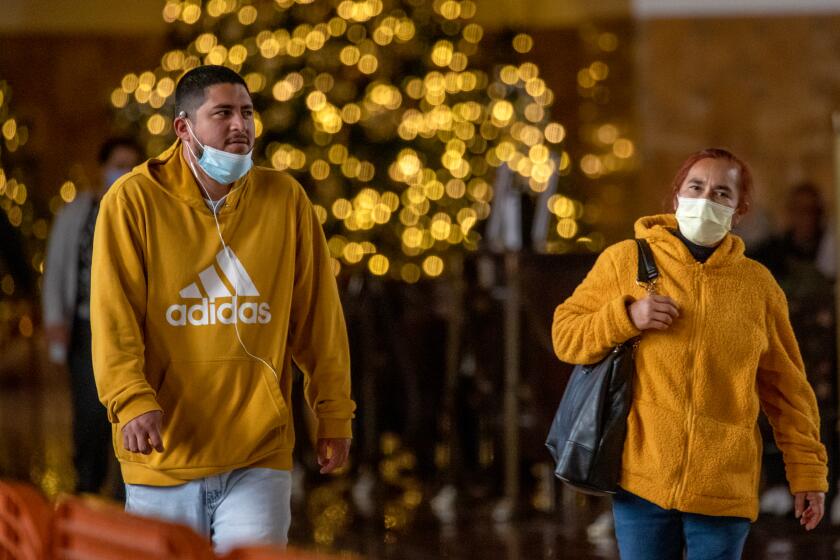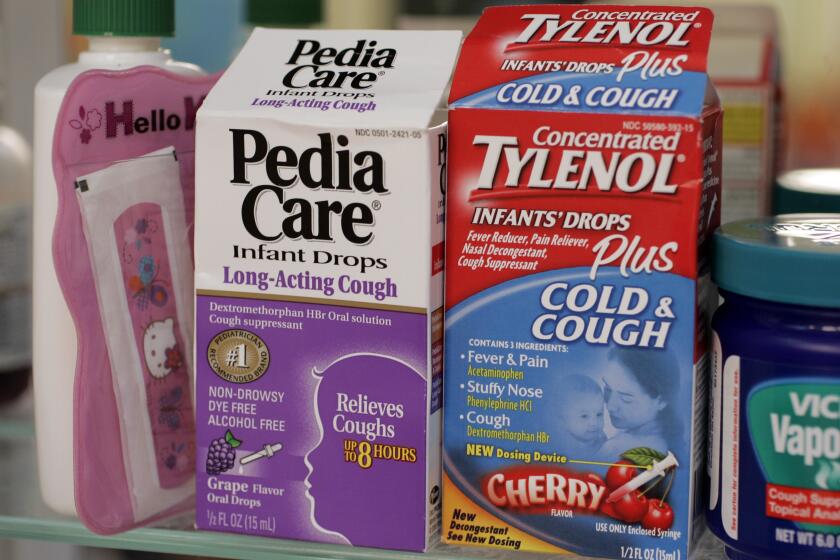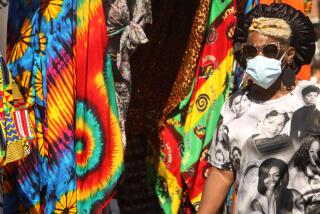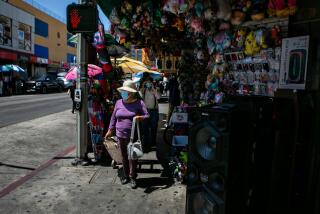Why L.A. is feeling ‘more hopeful’ about avoiding mask mandate despite COVID surge

- Share via
Coronavirus cases in Los Angeles County have been on the rise.
Hospitals in the region are seeing more patients as doctors deal with an influx of patients being treated for COVID-19 as well as those who are sick with the flu and other respiratory illnesses.
Local health officials are again strongly recommending that everyone wear a mask in indoor public spaces. But it remains unclear whether this winter surge will result in a new mask mandate.
Here’s why:
The bad news
Hospitalizations: L.A. County has already met one of two criteria that would trigger a new mask requirement: a relatively high rate of hospitalizations. The county is now reporting 14.8 new coronavirus-positive patients a week for every 100,000 residents; a rate of 10 or more is considered particularly worrisome.
Should hospitalization rates continue to rise this month, the county could be on track for a renewed universal mask order in indoor public settings. But that’s not assured.
Beds: The second factor focuses on the share of staffed hospital beds occupied by coronavirus-positive patients. According to the U.S. Centers for Disease Control and Prevention, 6.9% of L.A. County’s staffed hospital beds are being used by coronavirus-infected patients, up from 5.6% from the prior week. That figure would need to be 10% or greater for a mask mandate to be on the table.
Outlook: Public Health Director Barbara Ferrer previously estimated that L.A. County might reach the second benchmark around Dec. 19. Since the county would need to exceed both metrics for two weeks, any new mandate wouldn’t go into effect until the first week of January, at the earliest.
Signs of hope
Behind the figures: Coronavirus case rates are no longer spiking at the same rate seen just a few days ago. L.A. County was recording 3,780 cases a day — or 262 cases a week — for every 100,000 residents, for the week that ended Thursday. The latest tally is a bit lower than the rate for the weekly period that ended Wednesday. But it also represents a 40% week-over-week increase, which is concerning though gentler than the 81% jump seen over the weekend. A rate of 100 cases a week for every 100,000 residents is considered high.
Leveling off?: The latest data Ferrer shared Thursday during the county’s weekly briefing showed the hospitalization rate has started to level off. Should that trend continue, reaching the second hospitalization metric that would trigger a mask mandate would be further off — or less likely to happen at all. The share of staffed hospital beds being used by coronavirus-positive patients climbed 23% from the prior week, a smaller jump than the prior week-over-week increase of 40%.
‘More hopeful’: The hospital numbers prompted Ferrer to note on Thursday: “I think it’s fair to say that I’m feeling more hopeful that our metrics might improve before they tank.”
With COVID-19, flu and RSV cases rising, drugmakers and retailers say soaring demand is leading to empty shelves.
The bottom line
The situation is still dangerous, and past winter surges have proved you can’t predict the future.
For that reason, Ferrer urged residents to voluntarily mask up in indoor public settings.
“We know everyone is super focused on when might this be a universal masking, indoor masking requirement, but what we really want to focus on today is: We all need to wear our mask now,” she said. “We haven’t reached that super dangerous threshold … but ... there’s just too much transmission and it’s creating a lot of risk. And the time to mitigate the risk is actually now.”
When a county’s community level is high, as is the case now in L.A. County, the U.S. Centers for Disease Control and Prevention recommend residents “wear a high-quality mask or respirator,” and that those “at high risk of getting very sick consider avoiding non-essential indoor activities in public” where they could be exposed to the coronavirus.
Ferrer, though, emphasized that L.A. County is “not asking people to curtail their activities, to avoid activities or to shut down any activities.”
“We’re letting people know that the risk is higher with elevated transmission,” she said. “And because this is having an impact on our healthcare system and our vulnerable residents, it’s time to layer in sensible protections.”
More to Read
Sign up for Essential California
The most important California stories and recommendations in your inbox every morning.
You may occasionally receive promotional content from the Los Angeles Times.














